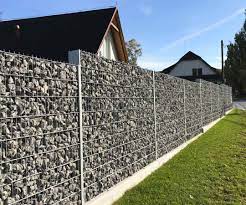A retaining wall is really a platform that was created to keep back grime using a slope or a improved region. It could be developed working with various resources, including definite, brick, stone, or solid wood. Retaining walls are generally used in landscape design duties to produce diverse amounts of height, quit grime erosion, and boost the appearance of backyard areas. In this particular article, we shall discuss just what a retaining wall is, how it works, and why it is recommended to get one away from your back garden.
1. The objective of a Retaining Wall
The principal purpose behind a retaining wall (támfal) is generally to prevent garden soil damage on the slope. If you have a significant variety in elevation between two areas of your back garden, planet earth will slide about the slope, contributing to deterioration and producing the area unknown. A retaining wall was made to keep back your garden earth, avoiding it from falling throughout the slope and safeguarding the region below it.
2. The Design of Retaining Walls
Retaining walls are usually created in a stepped development, with every stage supplying assistance for the one above it. The wall’s stage, span, and path of incline depends upon the slope’s steepness, the particular garden soil, and various other elements. The wall may be curved or straight, and it may be manufactured employing one among several materials.
3. Types of Retaining Wall Development
The most common parts a good choice for retaining wall development are cement, gem stone, brick, and wood made. Cement is really a preferred variety as it is solid, tough, and simply very easy to personalize. Gemstone and brick may also be preferred selections, whilst they give a all-natural visual that integrates well with external circumstances. Solid wood would work for tiny retaining walls but is definitely not as resilient as many other materials, particularly in spots with higher rainfall or another significant various climatic conditions.
4. Building a Retaining Wall
Constructing a retaining wall is truly a complex procedure that usually needs the data of the qualified landscaper or tradesman. The initial project will be to measure the site’s garden soil circumstances and figure out the correct layout and elegance and materials. As soon as the format is carried out, the contractor will excavate the garden dirt and commence constructing the wall. The wall is generally built-in tiers, with every covering obtaining recognized with steel bars and definite. Water flow water facial lines can also be fitted within the wall to avoid h2o develop behind it.
5. Benefits of a Retaining Wall
Retaining walls offer you quite a few positive aspects, like stopping debris deterioration, establishing multi-ranges landscapes, and enhancing your backyard’s overall look. Dependant upon the type of wall and components, retaining walls can even be relatively suprisingly low-maintenance and very very long-durable. Retaining walls may also greatly increase the need for your property by using an attractive landscape styles attribute that raises the seem and functionality of the specific backyard garden.
Verdict:
In conclusion, a retaining wall is the central scenery design functionality for everyone who way of life within a location with large ski slopes or size distinctions. It is designed to avoid grime erosion and keep the stability of your respective location below it. Retaining walls could be made making use of many different elements and designs and present benefits, consisting of establishing multi-stage property backyards and increasing your backyard’s imaginative elegance. To guarantee your retaining wall is created to final, be sure you meet with a consultant contractor or landscaper who will assist you to establish your site’s special problems and style a retaining wall that meets your needs.
